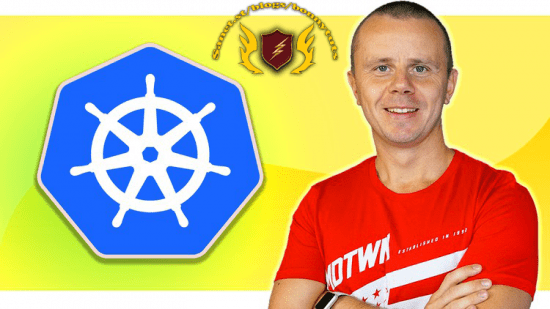
Published 04/2022
MP4 | Video: h264, 1280×720 | Audio: AAC, 44.1 KHz, 2 Ch
Genre: eLearning | Language: English + srt | Duration: 48 lectures (3h) | Size: 2.83 GB
Get started with Kubernetes and learn how to deploy applications into production to start your DevOps career
What you’ll learn
Understand what is Kubernetes and its architecture which includes Nodes, Pods, Services and Deployments and how to manage Services and Deployments
Create Kubernetes cluster, manage it using Kubernetes Dashboard, create Pods using command line, connect to Pods and explore their internals
Understand and be able to create different kinds of services such as ClusterIP, NodePort and LoadBalancer and certainly understand how internal DNS works
Create Services and Deployments using YAML configuration files which allow to apply and update configurations fast and easy
Requirements
Basic Docker knowledge is required
Your Mac or Windows computer and desire to learn
Description
This is the Kubernetes for Beginners. In this beginners-friendly course you will get solid understanding and practical experience with Kubernetes. Kubernetes is now de-facto standard for the deployment of the containerized applications into the production and it is the must-know tool for all DevOps engineers and software developers who want to learn how to run and test their applications in the production.
In this practical Kubernetes for Beginners course you will learn about key building blocks of the Kubernetes: Nodes, Pods, Services and Deployments.
During this course you will also perform following practical tasks
Create Kubernetes cluster locally on your computers using Minikube
Manage Kubernetes cluster using kubectl
Create Pods, analyze how they are assigned to particular Nodes and examine their internals
Create Deployments and observe how Kubernetes automatically creates necessary Pods for this deployment
Scale deployments, monitor deployments and observe what happens when some of the Pods fail
Create Services to be able to connect to the Deployments both internally and externally
Launch Kubernetes Dashboard
Also in practice activities you will learn how to deploy applications in Kubernetes following declarative approach
Create and apply YAML configuration files for the Deployments
Create and apply YAML configuration files for the Services
Modify Deployments and Services by making changes to the YAML configuration files and re-applying them
You will also learn how to perform following tasks
Perform rolling updates for the deployments
Change container runtime from the Docker to CRI-O and re-deploy all previously deployed applications.
With this course you will get lifetime-long access to almost 50 lectures and tens of practical exercises. After the course you will get solid hands-on experience with Kubernetes and be able to deploy any application into the production using Kubernetes.
Who this course is for
DevOps engineers who want to learn how to use Kubernetes
Software developers who want to learn how applications behave in the Kubernetes cluster
Password/解压密码www.tbtos.com